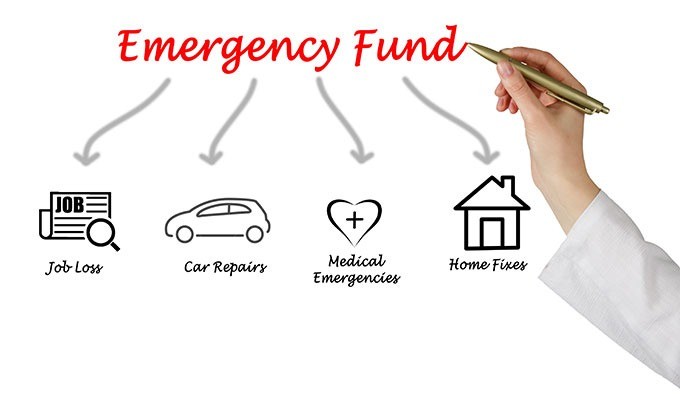
Ever faced a sudden financial crisis and wished you had a safety net? In this article, we delve into the art of building an emergency fund through savvy investing. From understanding its importance to exploring smart investment strategies and practical tips, we’ll equip you with the knowledge to fortify your financial future. Visit https://bitcoin-eraapp.com/; it provides educational insights from experts on smart investing strategies to build a robust emergency fund.
Smart Investing Strategies for Building Emergency Funds
In the realm of emergency fund building, strategic investing emerges as a crucial component, enhancing the potential for growth and stability. The objective extends beyond mere saving, encompassing prudent allocation of resources to maximize returns while mitigating risks.
An essential principle guiding these strategies is the emphasis on liquidity and stability. By prioritizing assets that offer easy access to funds and minimize exposure to market volatility, individuals can ensure their emergency fund remains readily available when needed most.
Moreover, leveraging tax-advantaged accounts such as IRAs and 401(k)s can optimize the growth trajectory of emergency funds. These accounts offer significant tax benefits, augmenting returns over time through tax-deferred or tax-free growth. Integrating a balanced mix of investment vehicles tailored to individual risk tolerance and financial goals is paramount.
While low-risk options like Treasury bonds and money market accounts provide stability, conservative investment funds such as bond funds and dividend-paying stocks offer potential for higher returns.
Incorporating a disciplined approach to monitoring and rebalancing the portfolio is equally essential for sustained growth and resilience. Regular assessments of investment allocations enable individuals to realign their strategies in response to changing market conditions or personal circumstances.
By staying informed and seeking professional guidance when necessary, investors can navigate the complexities of the investment landscape with confidence and prudence, ensuring their emergency fund remains robust and adaptive to future challenges.
Building and Maintaining the Emergency Fund
Building and maintaining an emergency fund necessitates a disciplined and proactive approach towards financial management. The process begins with a thorough assessment of one’s financial situation, encompassing income, expenses, and short-term and long-term goals. This evaluation serves as the foundation for determining the ideal size of the emergency fund, tailored to individual needs and circumstances.
Setting realistic saving goals is paramount, ensuring a steady accumulation of funds over time. Automating the savings process can facilitate consistency and discipline, streamlining contributions to the emergency fund without requiring constant manual intervention. Regular reviews of the savings strategy enable individuals to track progress towards their goals and make necessary adjustments as circumstances evolve.
Incorporating frugal habits and minimizing discretionary spending can further bolster savings efforts, redirecting resources towards the emergency fund. Establishing an emergency fund separate from other savings accounts helps ring-fence these funds for unforeseen expenses, reducing the temptation to dip into them for non-essential purposes.
Incorporating Investment Vehicles
Incorporating investment vehicles into an emergency fund strategy involves careful consideration of various options to optimize growth while maintaining the necessary liquidity and stability. One common approach is to prioritize low-risk assets that offer both safety and modest returns.
Treasury bonds and money market accounts, for instance, provide a secure investment option with relatively predictable returns, ensuring that a portion of the emergency fund remains readily accessible without exposing it to significant market fluctuations.
Another avenue for diversification involves conservative investment funds, such as bond funds and dividend-paying stocks. While these assets may carry slightly higher risk compared to cash equivalents, they offer the potential for enhanced returns over the long term. Bond funds, for example, provide exposure to a diversified portfolio of bonds, offering a balance between income generation and capital preservation.
Furthermore, investors can explore alternative investment vehicles that align with their risk tolerance and financial objectives. Real estate investment trusts (REITs), for instance, offer exposure to the real estate market without the need for direct property ownership, providing diversification and potential income through rental payments and property appreciation. Peer-to-peer lending platforms and high-yield savings accounts are other options worth considering, albeit with varying levels of risk and return.
Monitoring and Rebalancing
Monitoring and rebalancing are essential components of an effective emergency fund strategy, ensuring that the portfolio remains aligned with changing market conditions and personal financial goals. Regular monitoring enables investors to track the performance of their investments, identifying any deviations from the desired asset allocation or risk tolerance.
Rebalancing involves adjusting the portfolio to restore its original asset allocation or to realign it with evolving investment objectives. This may involve selling over performing assets and reallocating funds to underperforming ones, or adjusting the asset mix to reflect changes in risk appetite or market outlook. By rebalancing the portfolio periodically, investors can mitigate the risk of overexposure to any single asset class and maintain a diversified investment strategy.
Moreover, staying informed about economic trends and market developments is crucial for making informed investment decisions. Keeping abreast of relevant news and seeking professional advice when necessary can help investors navigate volatile market conditions and anticipate potential risks or opportunities.
Conclusion
In a world fraught with uncertainties, an emergency fund stands as a beacon of financial resilience. By embracing smart investing strategies and diligent maintenance, you can ensure that you’re prepared for whatever life throws your way. Take control of your financial destiny and embark on the journey to build a secure and stable future today.
Source: Explore





